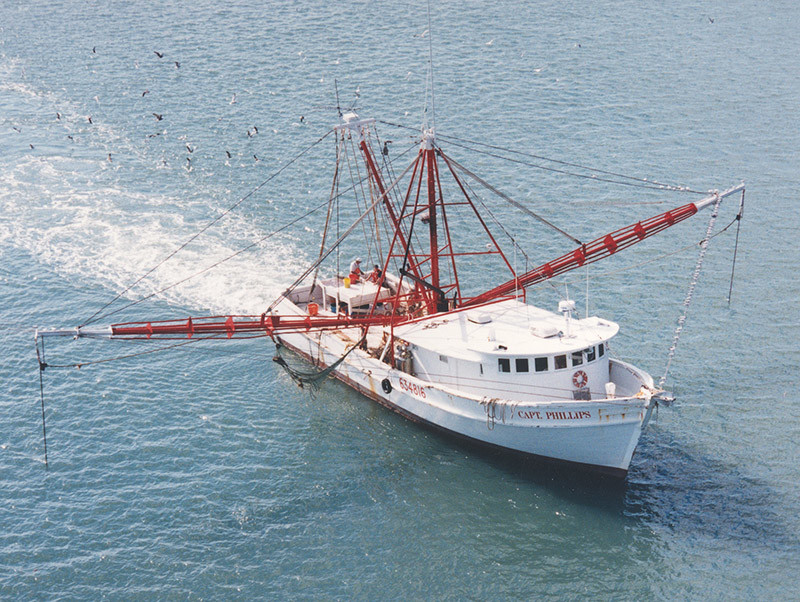Proposed NC shrimp trawl ban defeated – National Fisherman

Report on North Carolina Shrimp Trawling Legislation and Its Implications for Sustainable Development Goals
Introduction
On June 25, 2025, the North Carolina State House declined to act on legislation aimed at banning shrimp trawling in sounds and within 0.5 miles of the shore. This decision marked a significant victory for commercial fishermen who had organized a week-long protest at the state capitol.
Legislative Background
- House Bill 442 was initially drafted to set fishing seasons for southern flounder and red snapper.
- On June 18, the bill was amended in the state Senate to include a prohibition on shrimp trawling.
- This amendment sparked intense protests from shrimp fishermen and supporters, who suspected the involvement of the Coastal Conservation Association (CCA).
Stakeholder Responses
- The North Carolina Fisheries Association announced the defeat of the trawl ban, crediting collective efforts including emails, calls, personal conversations, and protests.
- Ryan Speckman, owner of Locals Seafood in Raleigh, expressed concerns that the CCA aimed to eliminate commercial fishing through the amendment.
- Republican Representative Mitchell Setzer confirmed that the measure would not be considered before the legislative break.
Emphasis on Sustainable Development Goals (SDGs)
This legislative event intersects with several United Nations Sustainable Development Goals, notably:
SDG 14: Life Below Water
- The proposed trawl ban aimed to protect marine ecosystems by restricting shrimp trawling near shorelines, which can reduce habitat destruction and promote biodiversity.
- Opposition from commercial fishermen highlights the challenge of balancing ecological conservation with sustainable economic activities.
SDG 1: No Poverty and SDG 8: Decent Work and Economic Growth
- Commercial fishing is a critical livelihood for many in North Carolina, contributing to poverty alleviation and local economies.
- The defeat of the trawl ban reflects efforts to sustain employment and economic growth within fishing communities.
SDG 17: Partnerships for the Goals
- The conflict underscores the need for multi-stakeholder partnerships involving government, conservation groups, and fishing communities to achieve sustainable fisheries management.
- Effective dialogue and collaboration are essential to reconcile environmental protection with economic interests.
Conclusion
The decision by the North Carolina State House to delay action on the shrimp trawling ban represents a complex interplay between environmental sustainability and economic livelihoods. Moving forward, aligning legislative measures with the Sustainable Development Goals will be crucial to ensure the long-term health of marine ecosystems while supporting the socio-economic well-being of fishing communities.
Image Reference

1. Sustainable Development Goals (SDGs) Addressed or Connected
- SDG 14: Life Below Water – The article discusses legislation related to shrimp trawling, which directly impacts marine ecosystems and fisheries management.
- SDG 8: Decent Work and Economic Growth – The article highlights the concerns and protests of commercial fishermen, indicating the importance of sustainable livelihoods and economic activities related to fishing.
- SDG 12: Responsible Consumption and Production – The debate over shrimp trawling and fishing seasons relates to sustainable fishing practices and resource management.
2. Specific Targets Under Those SDGs Identified
- SDG 14 Targets:
- Target 14.4: Effectively regulate harvesting and end overfishing, illegal, unreported and unregulated fishing and destructive fishing practices.
- Target 14.2: Sustainably manage and protect marine and coastal ecosystems to avoid significant adverse impacts.
- SDG 8 Targets:
- Target 8.3: Promote development-oriented policies that support productive activities and decent job creation, including in fisheries.
- SDG 12 Targets:
- Target 12.2: Achieve sustainable management and efficient use of natural resources.
3. Indicators Mentioned or Implied to Measure Progress
- Indicator 14.4.1: Proportion of fish stocks within biologically sustainable levels. The article’s focus on banning shrimp trawling and setting fishing seasons implies monitoring fish stock sustainability.
- Indicator 14.2.1: Proportion of national exclusive economic zones managed using ecosystem-based approaches. The legislative discussions on trawl bans relate to ecosystem management.
- Indicator 8.5.2 (implied): Unemployment rate, by sex, age and persons with disabilities. The protests by commercial fishermen imply concerns about employment and livelihoods.
- Indicator 12.2.1: Material footprint, material footprint per capita, and material footprint per GDP. The regulation of fishing practices relates to efficient use of marine resources.
4. Table: SDGs, Targets and Indicators
| SDGs | Targets | Indicators |
|---|---|---|
| SDG 14: Life Below Water |
|
|
| SDG 8: Decent Work and Economic Growth |
|
|
| SDG 12: Responsible Consumption and Production |
|
|
Source: nationalfisherman.com








